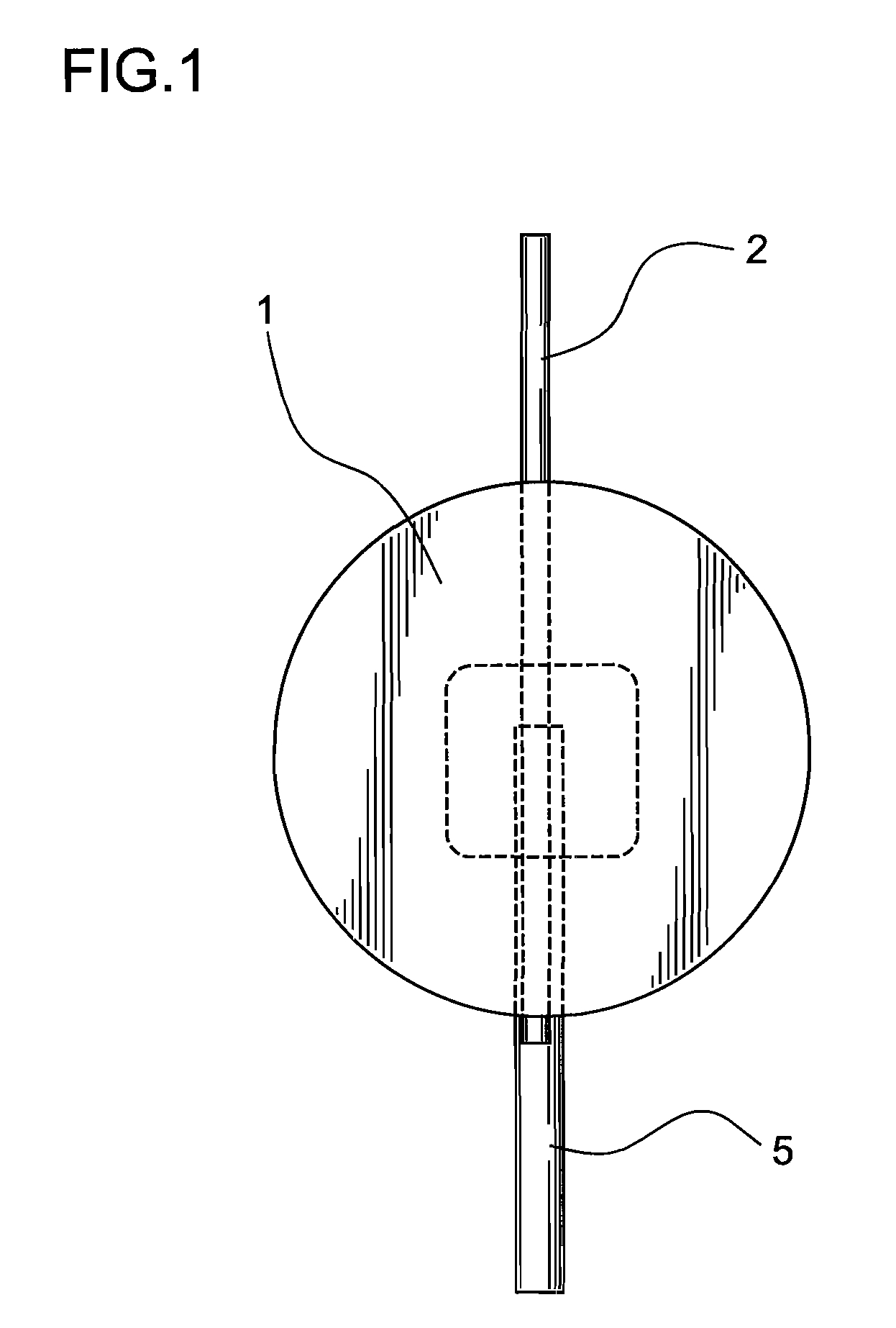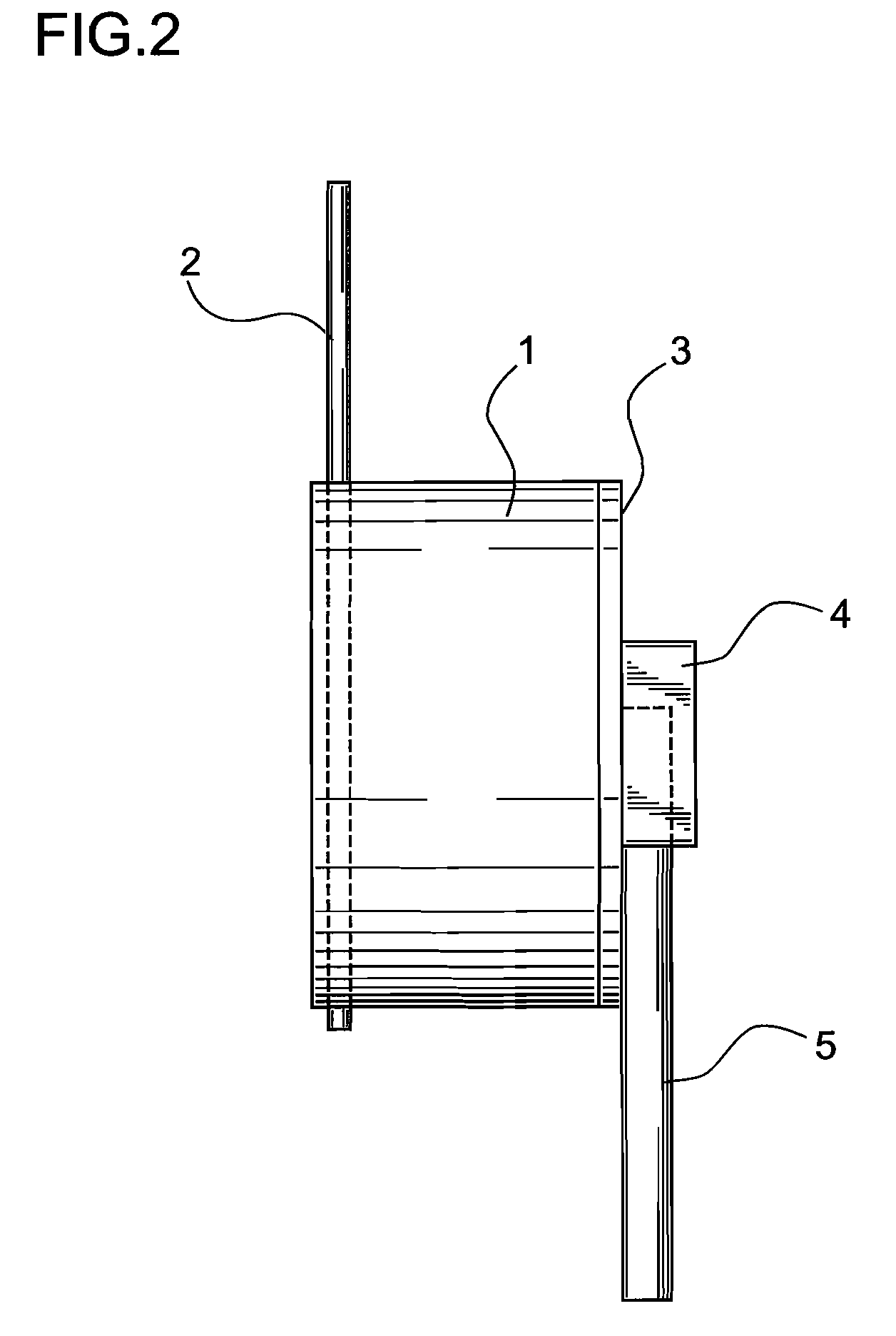Organic semiconductor radiation/light sensor and radiation/light detector
a radiation/light sensor and organic semiconductor technology, applied in the direction of instruments, radiation control devices, x/gamma/cosmic radiation measurement, etc., can solve the problems of poor sensitivity of organic semiconductors, not yet being used in real-time radiation detection sensors, etc., to improve dramatically detection efficiency, low energy loss capability, high sensitivity
- Summary
- Abstract
- Description
- Claims
- Application Information
AI Technical Summary
Benefits of technology
Problems solved by technology
Method used
Image
Examples
embodiment 1
[0051]In FIG. 1 to FIG. 3, a first embodiment of the organic semiconductor radiation / light sensor and the radiation / light detector according to the present invention are shown.
[0052]Numeral symbol 1 denotes an organic semiconductor formed in a substantially columnar shape with 7 mm in diameter and 3 mm in thickness. In addition, the thicker the organic semiconductor 1, the larger, the number of carriers created by passage of radiation or light and thereby sensitivity of the organic semiconductor radiation / light sensor becomes higher.
[0053]Part of a signal amplification wire 2 is embedded in the organic semiconductor 1. This signal amplification wire 2 is arranged substantially parallel with one surface of the organic semiconductor 1 which is substantially columnar. In addition, in the present embodiment, for reasons of fabrication, the signal amplification wire 2 is embedded in a biased position near one surface of the organic semiconductor 1. To improve uniformity of an electric fi...
embodiment 2
[0073]In FIG. 6, shown is a second embodiment of an organic semiconductor radiation / light sensor according to the present invention.
[0074]Numeral symbol 11 denotes an organic semiconductor which is formed in a long and substantially columnar shape and is 10 mm in diameter and 50 mm in thickness. Part of a signal amplification wire 12 is embedded in the organic semiconductor 11. Then, the signal amplification wire 12 is arranged on a central axis of the organic semiconductor 11 which is substantially columnar. In the present embodiment, as in the first embodiment, polyaniline and a gold-plated tungsten wire with a circular cross section and 30 m in diameter are used for the organic semiconductor 11 and the signal amplification wire 12, respectively.
[0075]Besides, there is provided an electrode 13 which is formed by applying gold evaporation over an entire circumference in a lateral face of the organic semiconductor 11 formed in the substantially columnar shape. A lead wire 15 is atta...
embodiment 3
[0080]Except that polyddecylthiophene (a test agent produced by Aldrich) has been used instead of polyaniline for the organic semiconductor 11 in the second embodiment, in a third embodiment, the organic semiconductor radiation / light sensor has been made in the same way as was done in the second embodiment. Also in this organic semiconductor radiation / light sensor, carriers created by passage of radiation or light are avalanche-amplified by a high electric field created near the signal amplification wire 12 by means of applying a high voltage to the signal amplification wire 12. Hence, as in the second embodiment, even radiation such as rays exhibiting smaller energy loss capability can be detected in real time with high sensitivity.
PUM
 Login to View More
Login to View More Abstract
Description
Claims
Application Information
 Login to View More
Login to View More - R&D
- Intellectual Property
- Life Sciences
- Materials
- Tech Scout
- Unparalleled Data Quality
- Higher Quality Content
- 60% Fewer Hallucinations
Browse by: Latest US Patents, China's latest patents, Technical Efficacy Thesaurus, Application Domain, Technology Topic, Popular Technical Reports.
© 2025 PatSnap. All rights reserved.Legal|Privacy policy|Modern Slavery Act Transparency Statement|Sitemap|About US| Contact US: help@patsnap.com



